-
Posts
2,151 -
Joined
-
Last visited
Content Type
Profiles
Forums
Gallery
Events
Posts posted by JSGerson
-
-
I noticed the fine detail work on the trailboard and was wondering how you got such nice results. I had a devil of a time making mine at 1:76.8 scale and your model is even smaller at 1:100 scale. The paint work is fabulous. That must of taken a very fine brush and a very steady hand. Well done!
-
As I mentioned in an earlier posting, the MS plan drawings of the rail supports do not fit properly on my model. Whether I’m at fault or the plans are, is immaterial. These have to be custom made now., By trial and error measuring using card stock, a first try template was drawn and cut out of the cardstock. Once I got the card stock to fit, it was traced onto 1/8” thick stock wood. Once I got the wooden piece to fit, I realized that it had to be refined a bit more. A second wood rail support was fabricated. This was able to fit properly onto the rails. The support was removed, painted and pin striped. Finally, it was installed. This was repeated the same manner (with or without an extra preliminary wood support as needed) for the remaining nine supports.
- Tigersteve, Prowler901, KurtH and 2 others
-
 5
5
-
This is when I discover a new problem. According to the MS plans, the precut gammoning holes in the stem are supposed to be between supports Nos. 2 and 3. Per the marks I just made with the gratings, the gammoning holes straddle rail support No. 3. The gammoning holes are where the gammoning chains pass through. Looking at the US Navy 1927 -31 Restoration plan No. 24779, the gammoning holes have been replaced with eye bolts embedded into the stem. The gammoning chains are then connected to the eye bolts. The chains are fastened to the bowsprit in the same manner as shown in the MS plans. These stem bolts are positioned half the distances apart as the pre-cut holes are and appear to be straddling rail support No. 3 from the numerous photos that I’ve looked at. Based on the all the ambiguities, just about nobody will even know about or bother to look inside the rails supports to see if there is even any gammoning there, let alone whether it is correct or not. Therefore, I am going to use the existing gammoning holes as they exist on my model in lieu of the embedded bolts shown on the US Navy plans, just because as builder of the model, I like the way they look.
- KurtH, etubino, Ryland Craze and 2 others
-
 5
5
-
Now it’s time to install the rail supports. These are positioned such that the joints of the floor grating in the seats of ease area, rest on the horizontal structural beams attached to the rail supports. In other words. Where the gratings meet, that is where the rail support is supposed to be. Using the grating parts supplied in the MS kit, I taped the three pieces together that make up most of the flooring, to mark off where the joints are with the architect tape on the stem.
- Prowler901, Stevenleehills, KurtH and 1 other
-
 4
4
-
I don't know how much "easier" building a cross section is than the full ship. The cross section has a lot more detail below decks. You might want to look at Tom Culp's build of the Model Shipway' Cross Section of the Constitution. In the mean time, I've attached a number of US Navy plans showing the cross section. You can find more plans with other details at the US Constitution Museum website.
- Marcus.K. and Stevenleehills
-
 2
2
-
-
-
BTY, I’m not knocking Mr. Hunt’s practicum. I could not have gotten this far if it weren’t for it. But I have learned that he’s human and he's the first to admit that his way may not be the best which is why in addition to using his practicum as a guide (not my bible), I also check how other builders solve these problems.
My second fabrication attempt at the 2nd rails went relatively smoothly; and they were glued into placed. In the first image below, I attempted to show the slight curve in the rails.
-
The next thing the practicum stated about the rail was, “It is not curved from side to side.” Wrong again. According to the MS plan, the second rail has a slight horizontal bow inward towards the stem, a much simpler curve than that of the 3rd rail. But I didn’t realize that until I re-read xKen’s build log (starting at post #294) of how he made his rails where he accounted for the inward bow. To double check, I looked again at the US Navy plan and saw that the bow was actually a slight S-curve. To be fair, the MS plan didn’t show the full length of the 2nd rail so you couldn’t see that it swung back slightly to form the S-curve. Unfortunately, I had already made the pair of 2nd rails. I reluctantly abandoned my first attempt and started over again this time using 1/8” layered stock (1/4” total thickness) to account for the S-curve.
-
However, using the 2nd rails to dry-fit the rail supports, I soon found out that the rail supports did not fit properly between the rail and the stem. Then, reading section 8.1.4 in the practicum about installing the “2nd rail from the top” I discovered that Mr. Hunt also ran into this problem. He believed through his investigation, that the MS plans were in error for the shape of the rail supports. I then checked the US Navy plans and there were only very slight differences that I could discern, so both Mr. Hunt and I don’t know where or what error(s) occurred. His solution was to fabricate and install the 2nd rail first, then custom fabricate and fit the rail supports then, work backwards to install the 3rd rails last. Because I only glued the 3rd rail to the starboard side at just one point, it was relatively easily to pry the rail off to continue following the practicum’s solution.
Going back over the practicum instructions, I noticed the practicum’s instruction for fabricating and installing the 2nd rail weren’t correct. The first error was to use the MS plan profile (elevation) view of the rail directly from the MS plan. Unfortunately, this is a foreshortened view because the rails are angled from the hull inwards towards the tip of the bow stem as indicated in the plan view. (I had this same foreshortening problem when I constructed the transom) To get the true view, that is the true length of the rails, I scanned the elevation view of the rail into my computer, using PowerPoint, rotated the image to match the angle of the rail in the plan view, then stretched the image till it matched the length shown in the plan view. Only then could I print the image with the proper rail length and make a template.
-
The practicum stated:
QuoteThe second rail from the top is made from 1/8" stock. This rail is fairly simple and straight forward. It is not curved from side to side. So, the only template we need is one of the profile of the rail, which we can take directly from the profile drawing.
Great, easy straight forward pieces to make…or so I thought. So, I proceeded and made the 2nd rails as instructed, complete with paint and pin stripes,
-
The next logical step seemed to be installing “3rd rail from the top. First, I used PVA glue to fasten the starboard side rail just to the underside of the cathead only. I left the stem tip end unglued to allow me some wiggle room when adding the rail supports. I anticipated that the rail supports had to be at least fitted with the rail installation. Therefore, the rail supports (port and starboard) were fabricated based on MS plan detail 4A at the same time as the 3rd rail.
-
I scanned my Mamoli plan for the Main Mast. Due to the size of the sheet, it took 3 passes. I hope it helps.
- Kenneth Powell, Rollingreen and Dave_E
-
 3
3
-
- Avi, Scallywag and mort stoll
-
 3
3
-
What the first diagram is try to convey is, as you apply the copper plates to the hull, you start at the stern and work your way forward and upwards overlapping the edges of of the previous aft plate as well as the plate below's top edge.
The second instruction is trying to state that because the plates are applied to the hull with no tapering unlike the wooden planks which are tapered. Therefore, sharp curves are going to be created at either or both the stern and bow. In order to minimize those curves a steeler, an extra row for a short length is added. The BlueJacket instruction is telling where a steeler should be placed. At each band, you in effect start a new horizontal uncurved row. The higher band cuts off the curving from the lower band. The diagram below illustrates a coppering method. I hope this helps and not confuse you more.
Jon
-
-
If you use the glue blob method, you can wipe off the glue if you notice the error early enough or use an Xacto knife and just pop off the dried glue. I used (0.6mm punch) with brass punch-out's. I used Wipe-on-Poly as the adhesive. While still wet, I had time to maneuvered the punch-outs into position. It dried fairly quickly and adhered the punch-out to the surface. Drilling is permanent. I wouldn't worry about out of position bolt heads. Once the hull is painted, you will be hard pressed to see them, let alone be able to identify which are out of position.
I deliberately used this phenomenon when I copper plated the hull. Most of the builders who decided to emboss the copper plates to simulated nail dents either went around the plate edge with a ponce wheel or made a pattern embossing stamp. This resulted in what I felt were out of scale dents on the plates for these model scales. I embossed the plates with random indentations made by pressing the plates with coarse sandpaper for the face of the plate and adding edge markings from the straight line teeth of a fine miter saw. From three inches back you could not see if my "nail" indentations were random or patterned. What it did do was remove the flat shiny surface. The effect worked great.
Jon
-
You know, I never noticed there was a subtle difference in the pattern. Oh well, it's too late for me but after a coat of black paint, you can barely see them at all let alone discern the difference in the two decks. That, and 99.9% of the people who actual take the time to look at these models would not have the intimate knowledge to recognize that detail. I believe it's because the spar deck has cannonades and the gun deck has, well, guns. Still, if I was a aware of it earlier, I would have done it more accurately. Good eye!
Jon
-
Very nicely done. If you show the bolt heads for the gun deck, shouldn't the spar deck have them as well? Those bolt heads represent the back end of the eye-bolts used for rigging the guns and there are guns on the top deck too. A bit late now. but another method for creating the bolt heads you could have tried, was using a needle point to dab fine drops of white glue onto the hull surface to create the bumps and saved you all the effort of drilling and cutting.
Jon
-
By trial and error, piece by piece I fitted and refitted the parts with some symbolism of hope they would all fit together the way the plans showed them. Finally, when I felt it was a good as I was going to get, the rails were painted black and the pin striping was added. This time I used the 1/64” pin striping tape at the narrow portion of the rails and the 1/32” tape where it widened.
- Jack12477, KurtH and Prowler901
-
 3
3
-
To complete the fabrication of the rails, the two components that made up each of the rails, were glued together. This had to be done on the faith that I fabricated the pieces perfectly so when they were attached together perfectly, they created the rails to perfectly fit on a perfectly formed hull. With my skills, I knew I hadn’t a chance of pulling this off on the first try. I made it sound straight forward, but it was not. I made numerous attempts and tried different methods to reconcile the process.
To help me figure out where the rails had to fit, I cut out the five vertical rail supports out of 1/8” stock for each side of the bow. This presented its own set of problems. Although the rail supports were shown to be notched to accept the rails on the plans, I needed to know where the rails would touch the supports on the actual model. I couldn’t ensure that the rails were formed properly to fit into the supports until the supports were notched. And I couldn’t notch the supports until I knew where the rails would finally be in its proper position. What also hindered this process was, I couldn’t do dry fit ups because none of the parts were glued in place for the remaining parts to be dry fitted to. The rails hang out in space and needed to be connected to cantilevered support notches.
When I attempted to at least hold the rails in position with my fingers, I found that the compound angles of the cathead cheek knee were not correct (surprise, surprise). To reconcile the compound angles, additional wood had to be added and original wood removed with sanding sticks and files in strategic areas on the cathead knee, to make the rails fit where they were supposed to go. I was sculpting the wood supports liked they were made out of clay. I could get away with this method because everything is to be painted black and no one will be able to see the multitude of pieces that make up the cathead knee. You can see where wood was added and carved off in the second image below.
- Prowler901 and KurtH
-
 2
2
-
The practicum calls for ¼” stock or 1/8” layered stock if you didn’t have the ¼” stock. Not having any ¼” stock at my immediate disposal, I glued and clamped two pieces of 1/8” stock, enough to make the two rails. Then as directed by the practicum, rubber cemented the images of the port and starboard rails from their fiddlehead tip to just where it turns upward to meet the cathead for the first rail component. The second component starts from under the cathead to where it overlaps the first to create a diagonal joint. I had to reapply the paper elevation and plan templates to the pieces that came from under the cathead so I could cut the wood in both the X and Y planes. Those parts curve in two directions.
These are fragile pieces when they are cut out of the stock which made filing and sanding them to form their required shape, a delicate task.
- Prowler901 and KurtH
-
 2
2
-
The Cheek Knees and Rails
Following the practicum again, I proceeded to the next rail, the one up from the trailboard or as the MS plans identify it, 3rd from the top. The practicum claims it’s “probably the most difficult of the rails to construct.” The reason is that the rails twists and turn in three dimensions, have no straight lines, tapers from one end to the other, and must connect to seven different points on the model precisely.
The practicum’s method is to make the 3rd rail out of two main components as shown below, plus a third component, the cathead support called the cheek knee, that fits under the cathead sticking out 90 degrees with the cathead from the hull. This is because the rails’ complex shape would require very thick pieces of wood if the rails were to be carved as single units. The image below shows the MS plan’s elevation and plan views.
-



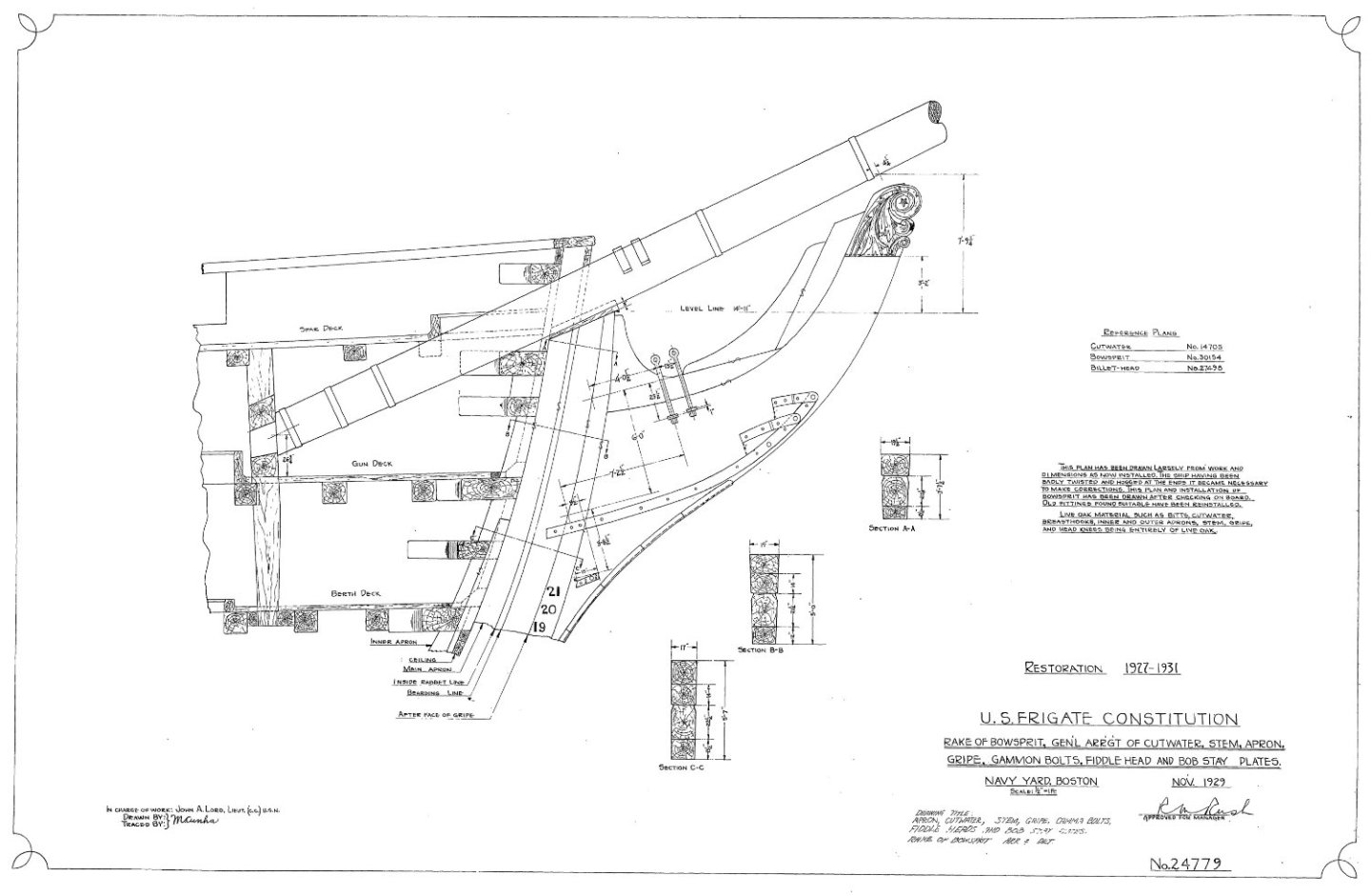
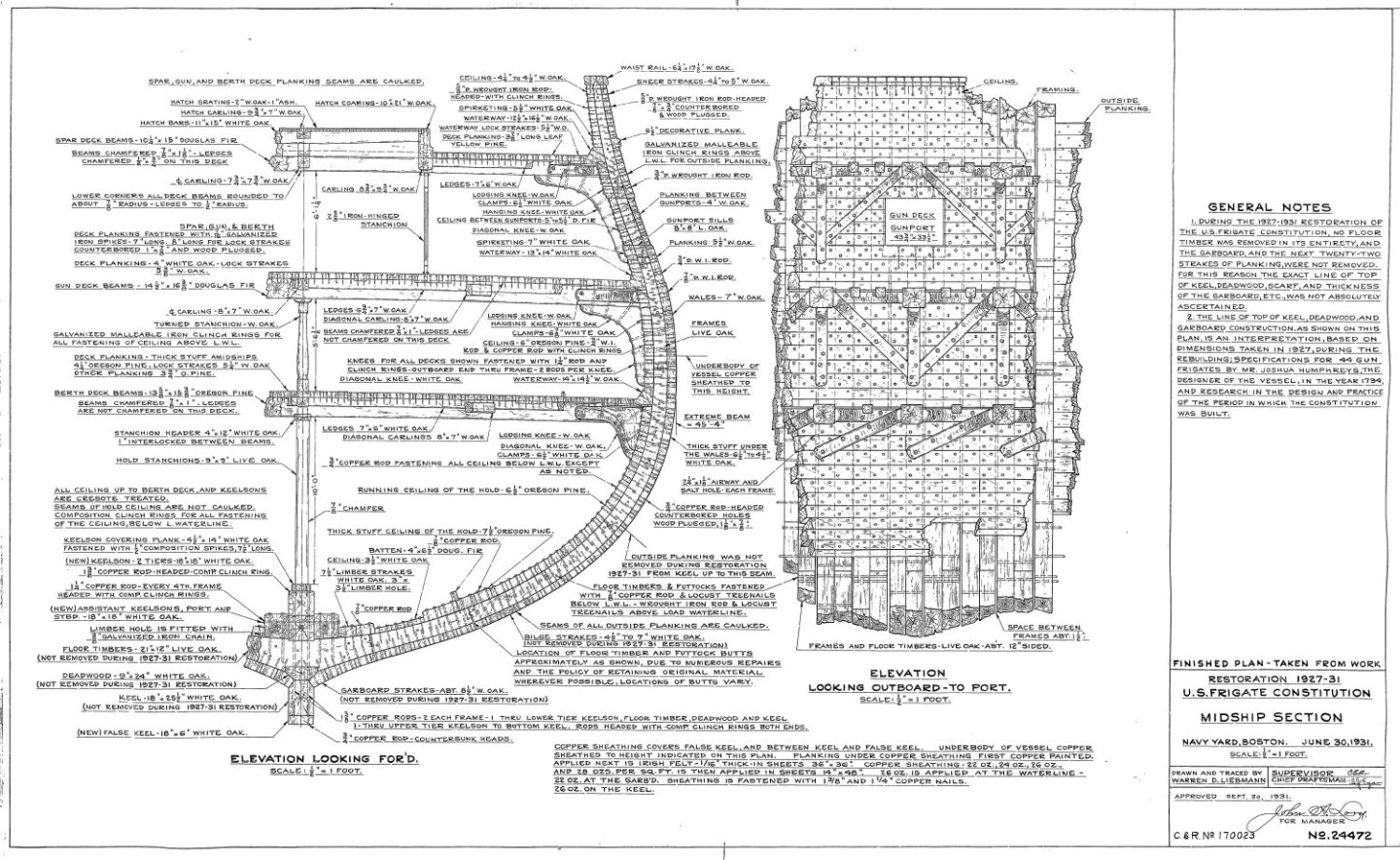

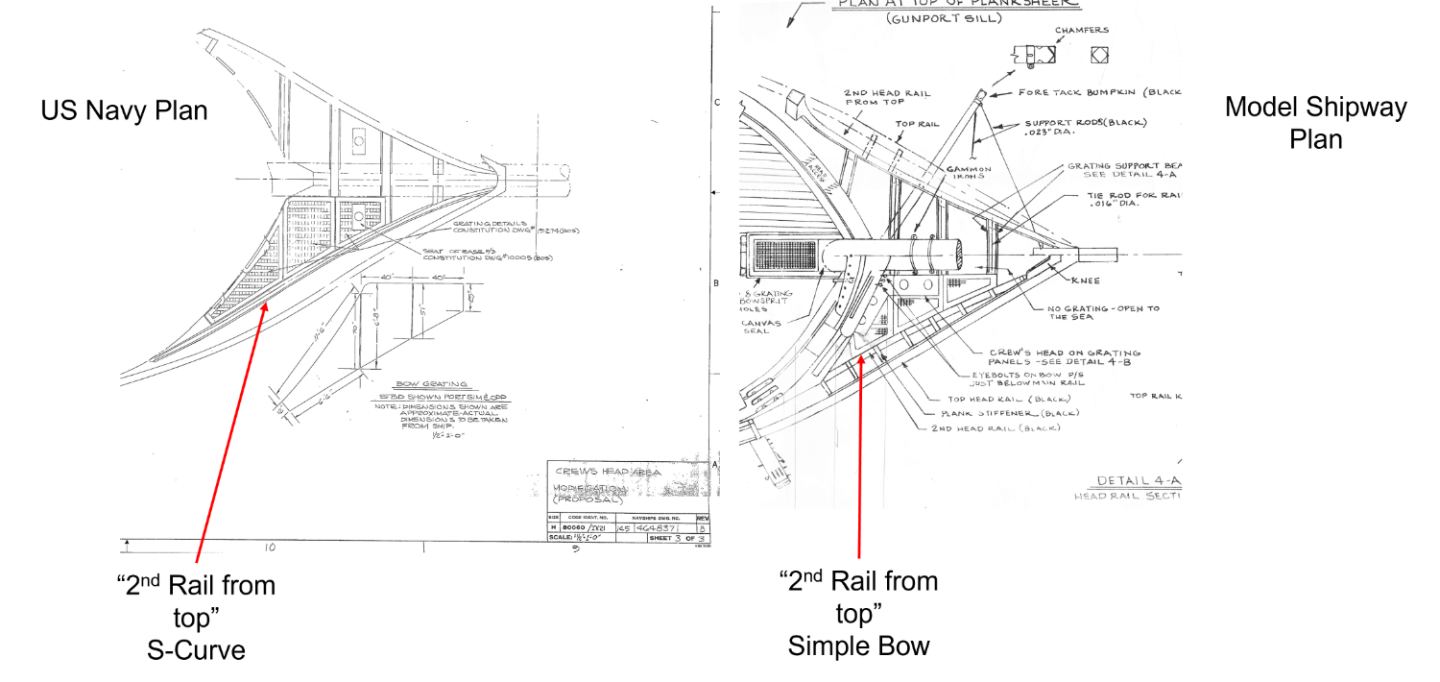
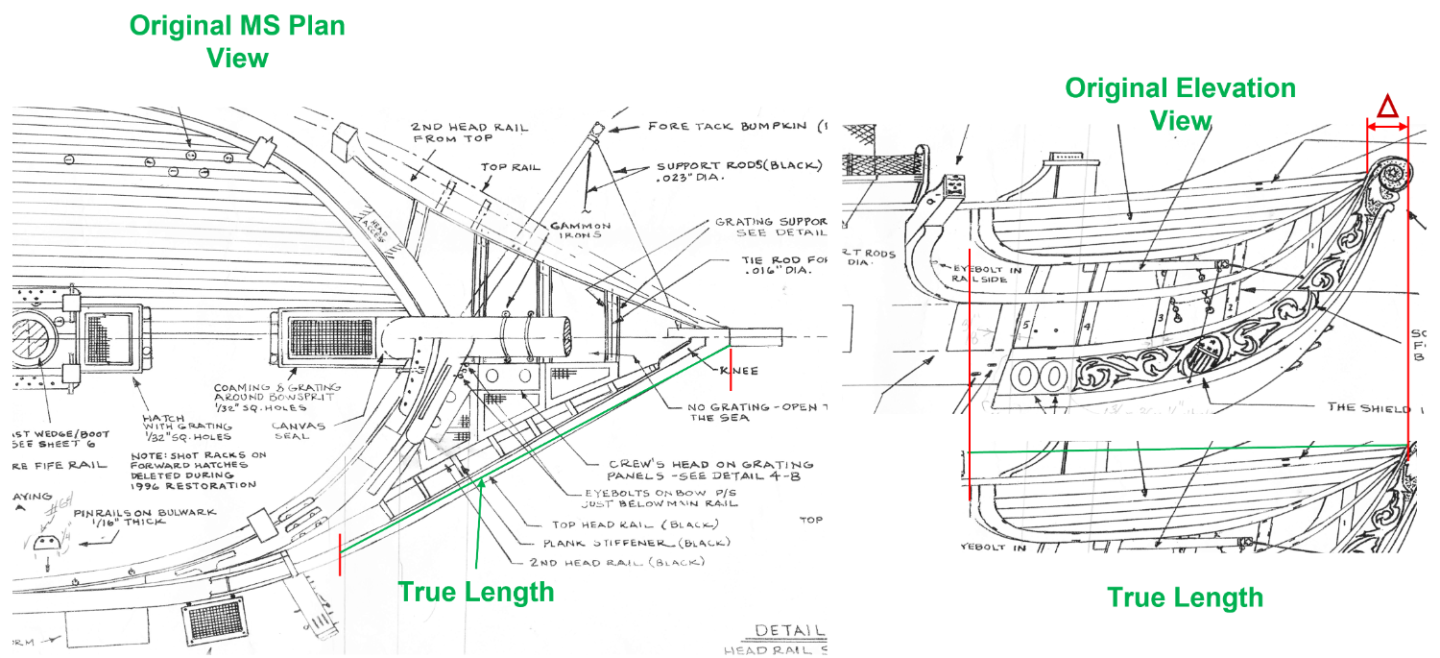

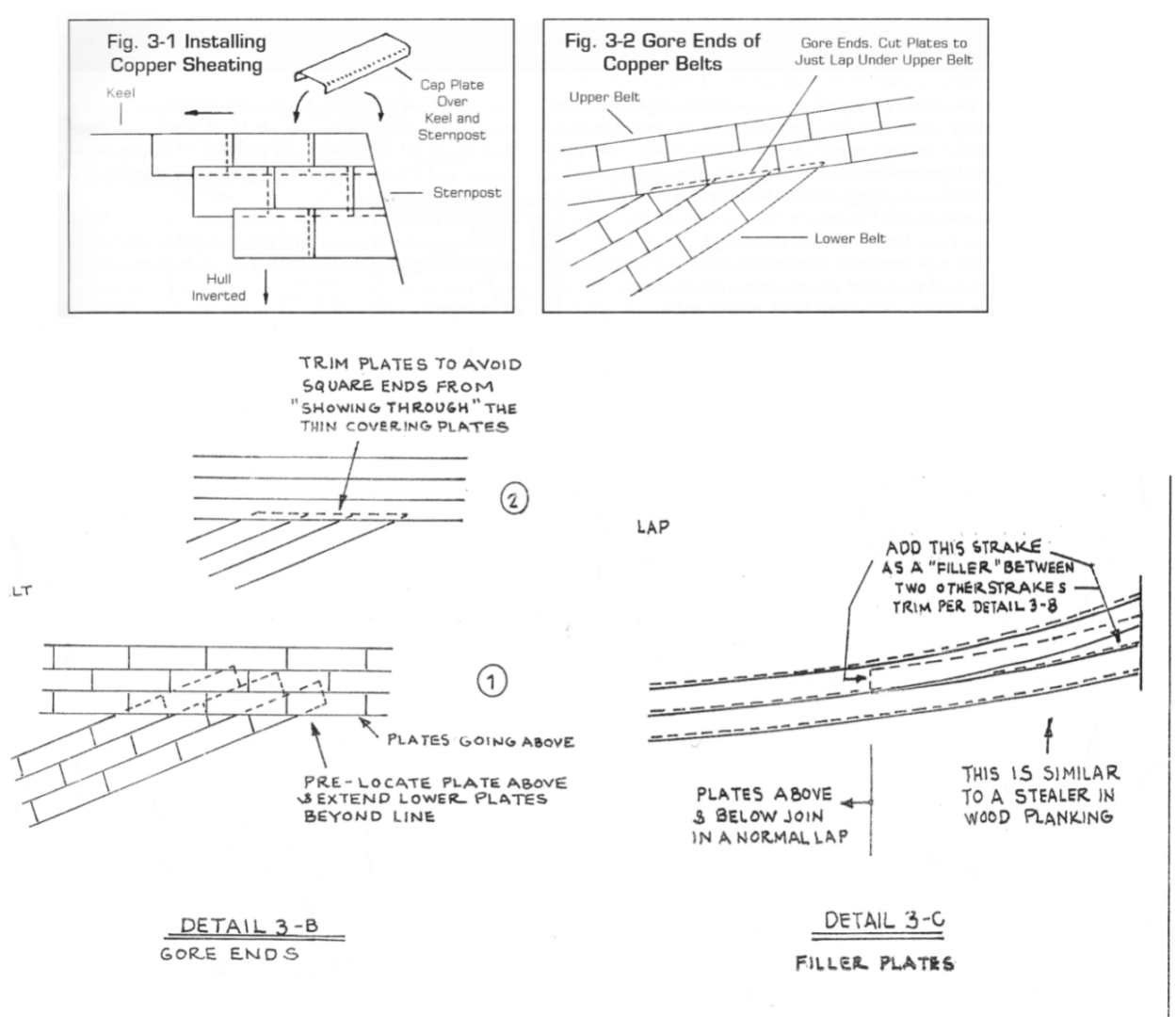
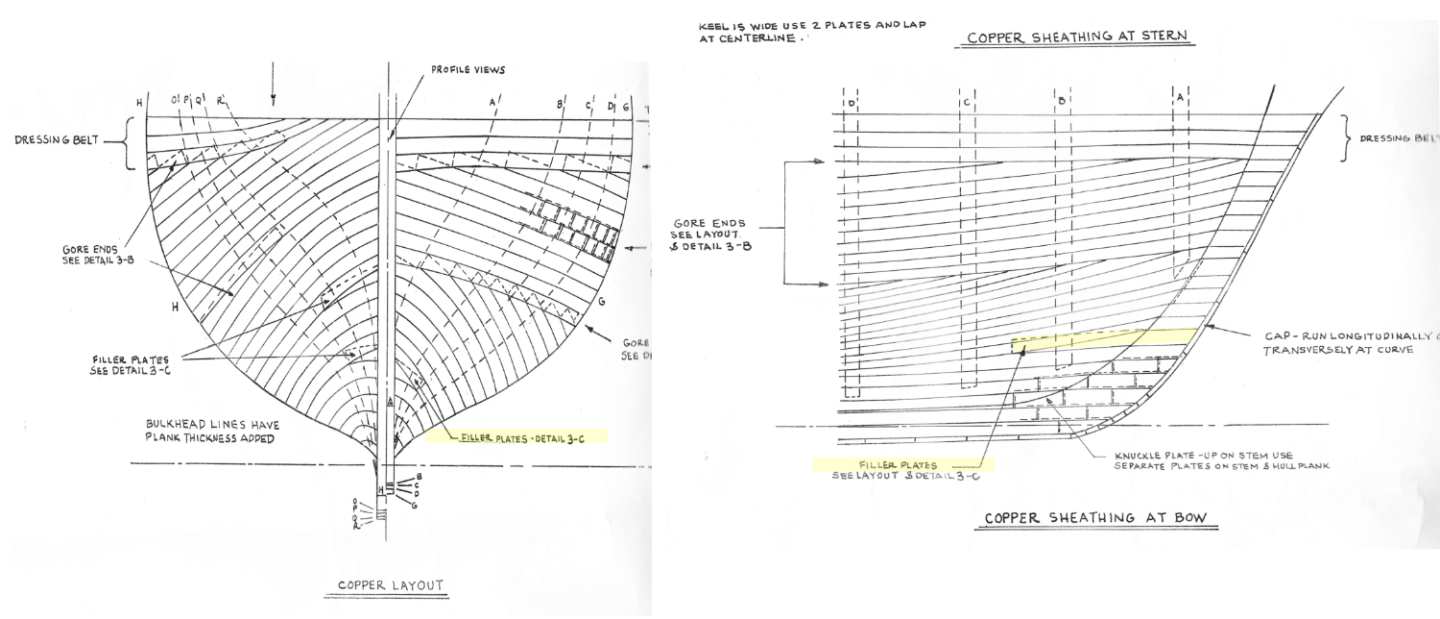

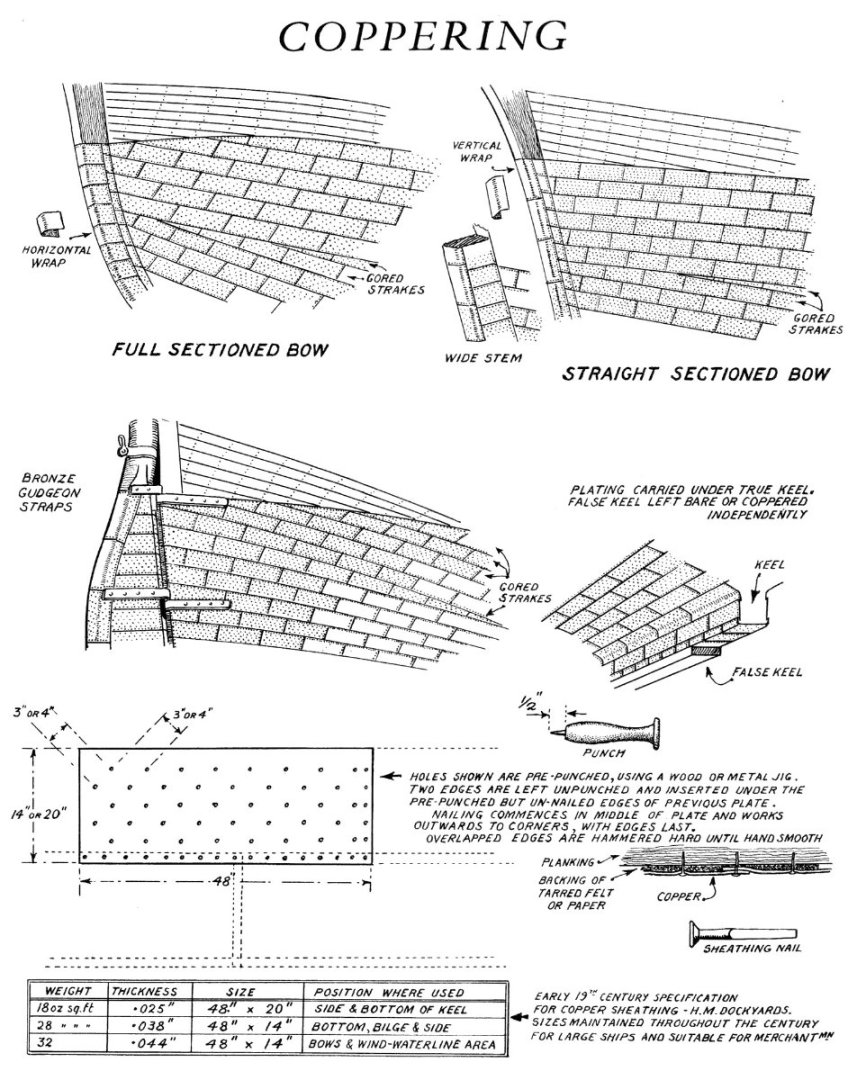
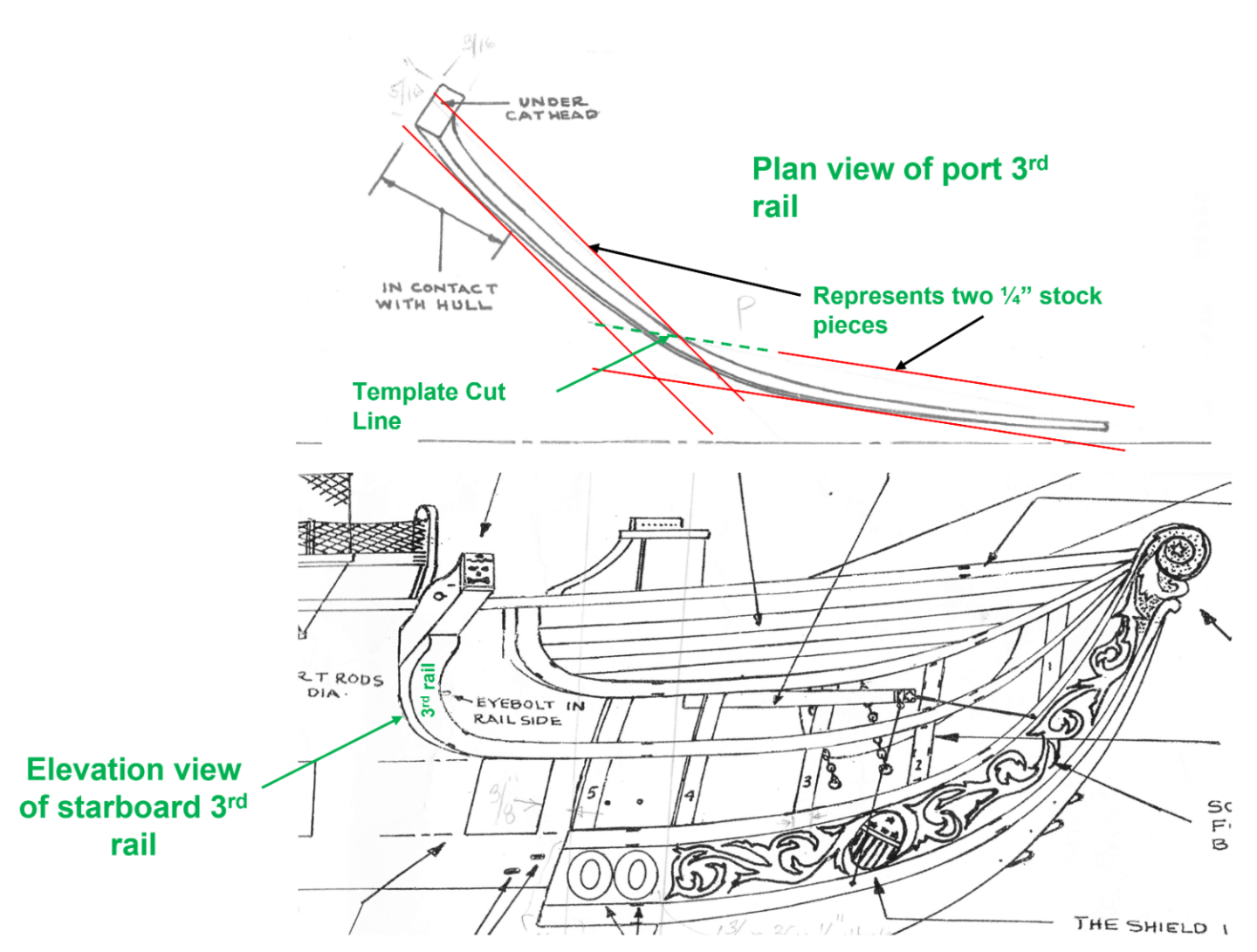

USS Constitution by Avi - BlueJacket Shipcrafters - 1:96
in - Kit build logs for subjects built from 1751 - 1800
Posted
From your images, the green looks good to me. Like all painted surfaces, how it looks depends among other things, on the light source. Go online and find an image of the bulwarks in the full sun and compare that with your model under the same type of lighting. Then decide if you need to adjust.
Jon